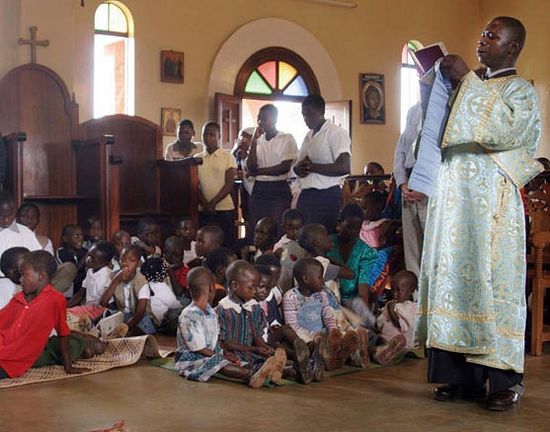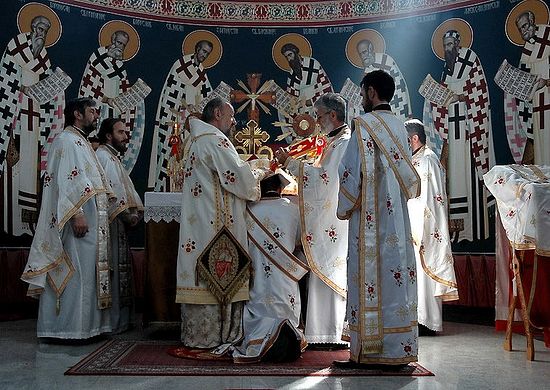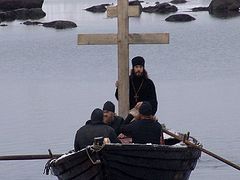In the 1980’s sci-fi comedy, Short Circuit, a charming military robot character, “Number 5,” is awakened into consciousness by a lightning strike. He fears going back to his military keepers where he will be re-programmed. And so, with help from human friends, he begins his touching effort to stay free. His famous line, repeated often, echoes his drive to understand, “Need input!” He is an example of our modern imagination. We understand ourselves to be like Number 5. We need information and on the basis of that information we make choices. It is not uncommon these days for us to use the language of computer systems to describe our own inner workings. Many liken our brains to sophisticated computers.
Research scientist, Robert Epstein, notes:
But here is what we are not born with: information, data, rules, software, knowledge, lexicons, representations, algorithms, programs, models, memories, images, processors, subroutines, encoders, decoders, symbols, or buffers – design elements that allow digital computers to behave somewhat intelligently. Not only are we not born with such things, we also don’t develop them – ever.
Likening a human being to a computer works for many people. It does so because we have a distorted sense of how human beings live and function. This distortion, strangely, has its roots in theology.
The Reformation rejected many of the ideas of Medieval Christianity and set in place new models that would become the foundation of the modern world. One of those was to redefine how human beings were to be understood. Essentially, their simplified model was to see us as intellect and will. There were various shades of agreement and disagreement about whether intellect or will was the more important, but no one doubted that human beings were to be approached on the ground of information and decision-making. Church architecture in short measure began to reflect this new understanding. Altars were de-emphasized, often replaced by a simple table. The pulpit became a primary focus, sometimes being moved to the center of attention. Though sacraments remained important (at first), they were deeply suppressed in favor of “the word.” The Scriptures were emphasized but in a new manner. They were the treasure-trove of all information. Believers were to be instructed constantly and urged towards right choices. Christianity quickly morphed into a society of religious morality. This arrangement and understanding are so commonplace today that many readers will wonder that it has ever been anything else.
However, liturgy itself was never meant to convey information in such a manner. It has a very different understanding of what it is to be human, what it means to worship, and what it means to liturgize in the Church. Human beings learn in a variety of ways. Young human beings do almost nothing but learn every waking moment of the day. But they primarily learn by doing (kinesthetic memory) and mimicry (play). It is possible to acquire some information in a lecture format but this remains perhaps the least effective human activity when it comes to learning. It has almost nothing to do with liturgy.
Christianity, prior to the Reformation, was largely acquired as a set of practices. Things that seem rather innocuous (or even superstitious) to the intellectualized/choosing practices of modernity are actually the stuff that constituted, formed and shaped the Christian life. The pattern of feasts and fasts, the rituals of prayer, the preparation for and receiving of communion, all of these, far too complex and layered to be described in a short article, formed a web of nurture that linked the whole of culture into a way of life that produced Christian discipleship. Those who argue that it did not do a good enough job, have nothing to which they can point as an improvement.[1] Instruction and choice have not made better Christians – indeed, they have been a primary element in the progressive secularization of Western civilization.
These two cultures, the classical and the modern, often clash in the context of an Orthodox Church. Having been formed in popular Protestant culture, people frequently conceive of themselves as audience. They arrive. They want to be seated (and there are not always pews in an Orthodox Church). They want a direct line of sight to “what’s going on,” and they would like the service to not exceed their attention span. The same culture forces will urge that children be either removed from the service as soon as possible or carefully controlled so as not to disturb or distract. I have seen more than a few such “Westernized” Churches (or simply “modernized”). The same forces that produced the modernist liturgical reforms among Protestants and Catholics offer the same arguments. It is difficult to resist the demands of highly insistent consumers.
But all of this is a false mindset, a misunderstanding of what we are as human beings and the nature of our life with God. Living as a consumer is a covenant with death. God is not information to be judged and purchased. The complaint about “cafeteria Catholics” raised a few years back by one of the Popes, is simply an accurate description of Church members who have been nurtured in the modern mindset. They “shop” for their religious beliefs, because they were taught to. It has become their mode of spirituality.
Worship, at its heart, is communion with God, a participation in the life of God through offering, thanksgiving, and grateful reception. The Elder Zacharias describes this as “exchange.” It is utterly natural to human existence, and is as available to a child as it is to an adult. It is, at its root, a mode of existence. The Divine Liturgy at its heart, is an exercise in this mode of being. It is not a performance to be watched, but an action in which to be present.
It is worth noting that in the Orthodox Church children receive communion from the very day of their Baptism – thus, their full participation in the life of the Church is taken for granted. This is expressed in different ways depending on the culture, but it is not unusual to see a child, sitting on the floor, quietly playing with a toy during the service. It is a childlike manner of “being present.”
We are not an audience in the Liturgy. We are not gathering information in order to make a decision. We are in the Liturgy to live, breathe, and give thanks, in the presence of God. There is often a quiet movement within an Orthodox congregation. Candles are lit and tended. Icons are venerated. Members cross themselves at certain words, but are just as likely to be seen doing so for some reason known only to them and God. It is a place of prayer, and not just the prayers sung by the priest and choir.
The struggle for a Christian in the modern world is to renounce the life of the audience. Within the audience we experience a deep estrangement from God. We are always “watching” from somewhere else, always engaging the false self with its criteria of judging, weighing, deciding. The world becomes a beauty contest but never a wedding. Modernity creates false distinctions. We are anxious that if we are not “part of the show,” then we are somehow being excluded. “Where are the women?” a visitor asked, commenting on the group within the altar. Ironically, they were spread throughout the Church, participants in the marriage of heaven and earth that is the Divine Liturgy. “Watching” one of their gender “perform” would make none of them more present, only somehow satisfied in the judgment of the audience that some abstract sense of inclusion had been satisfied.
The false consciousness of the modern world can never be happy nor satisfied, for the heart longs for participation and communion, not for the perfect performance. The voice of the choir swells early in the service, not with the sound of “watch this!” but with the voice of the Church, “Come let us worship and fall down before Christ!”





